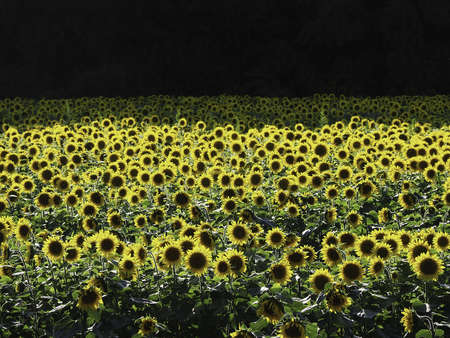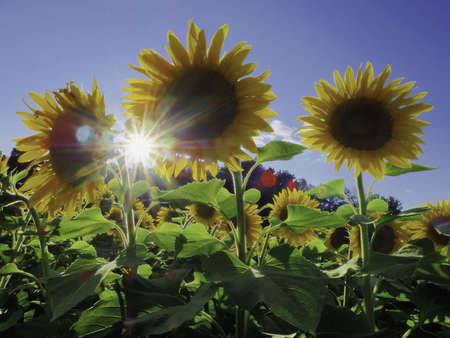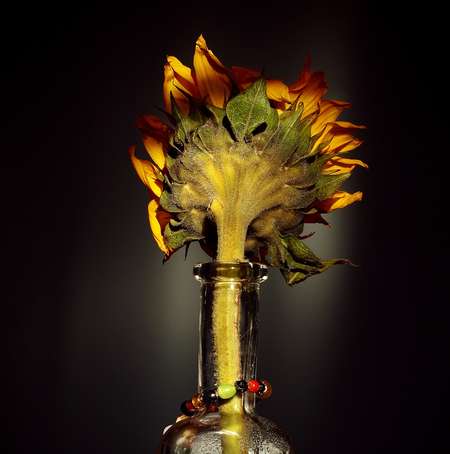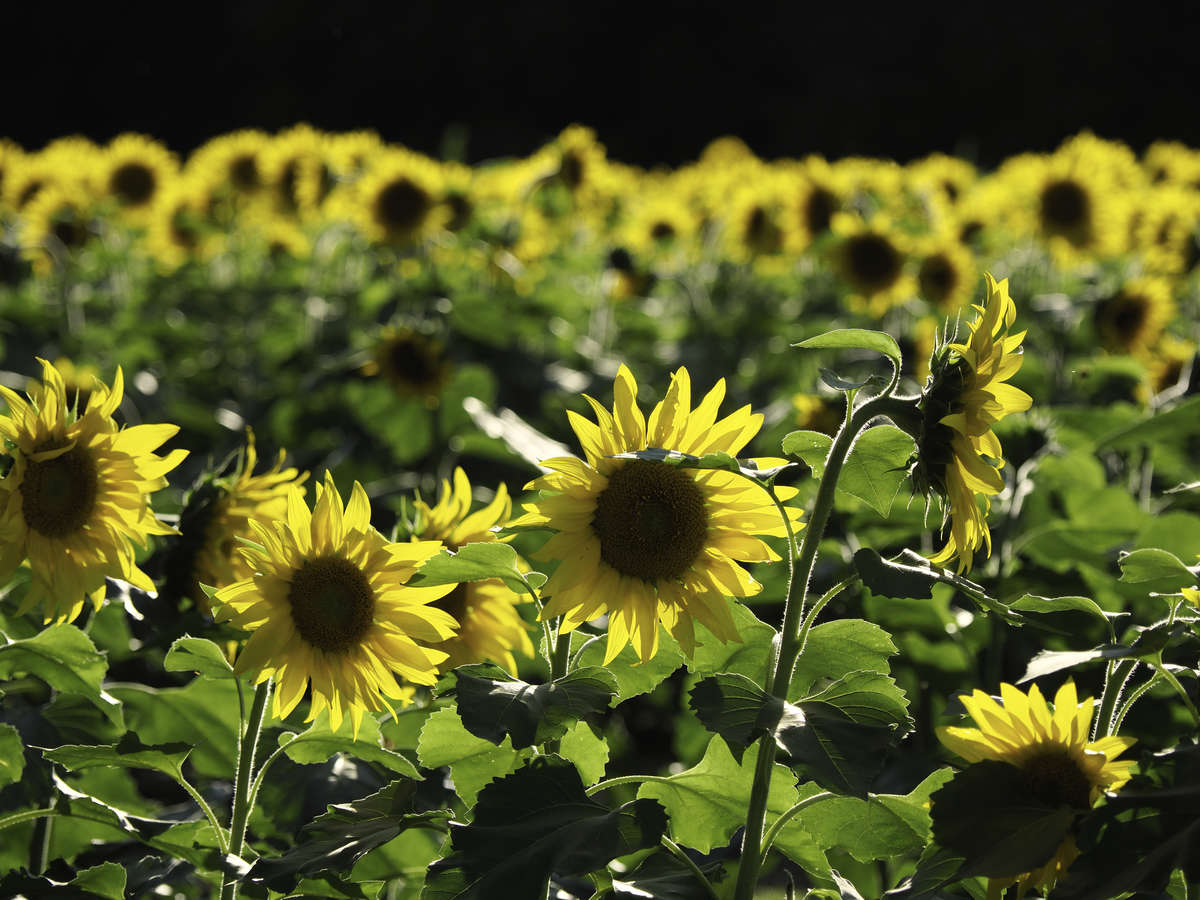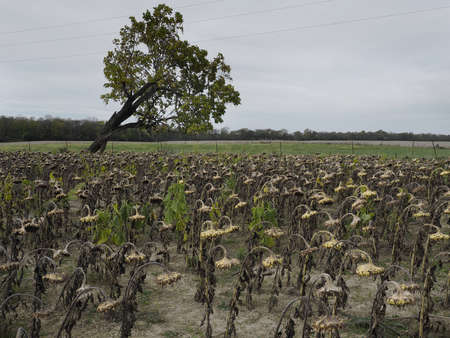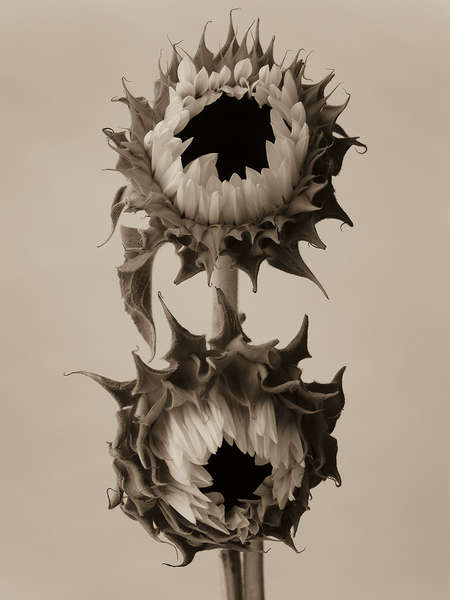Few botanical specimens demand a place in front of the lens like sunflowers. They’re beautiful in their resplendent primary yellow, symmetrical in form, highly textured, and available year-round in markets and flower shops anywhere. As an added bonus, sunflowers are cultivated the world over as a food source, so the vast fields of mature, golden flowers offer endless photographic possibilities in an outdoor setting. Whether you enjoy working indoors or outside, sunflowers offer a lot of potential for extraordinary photographs.
Here are ten tips to think about when capturing the essence of these beautiful flowers.
GET YOUR GEAR TOGETHER
I find a wide-angle paired with a macro lens works well for flower photography. I prefer the tiny M.Zuiko Digital 30mm F3.5 Macro for its light weight and amazing sharpness. The new M.Zuiko Digital ED 17mm F1.2 PRO lens is another favorite. The 17mm used at F1.2 imparts a beautiful “bokeh” to the image and makes distracting background elements dissolve into a pleasant dreamy look that is appropriate for this type of photography. As a bonus, the 17mm has an amazing close focusing ability. For super close-ups, stick to a dedicated macro lens. One often overlooked accessory is a small fold up reflector that can help reflect window light or sunlight back into dark shadows. Your reflector doesn’t need to be large—something 12 to 18 inches in diameter is ideal. Mine will collapse into a small circle and fits inside my camera bag. A white card or piece of foam board also works well.
GET OUTSIDE
You can work indoors in a studio setting and make beautiful images, but for something different, try to find a local sunflower farm and shoot at sunrise or sunset. There’s nothing quite like wading into the middle of a sea of the beautiful yellow discs. This is a perfect opportunity to work in low angles to look for contrast between the shapes and clouds. Alternately, include the sun in the frame as it hovers near the horizon. Look for the sun to cast beautiful flare and rim-light effects on the flowers. I like to turn on my OM-D E-M1 Mark II's in-camera HDR (High Dynamic Range) setting to capture an extended tonal range between the flower details and the sunburst. While you’re shooting, try making subtle changes in your framing to alter the flare effects. While you’re surrounded by all this beauty, look for repeating pattern as you compose your shots. Focusing on details on one flower while throwing others in the background out of focus can add an interest symmetry to the final image.
PHOTOGRAPH THE BACK OF THE FLOWER
Study your subject carefully and decide which visual details interest you the most. Some of the most artful and evocative sunflower imagery is made of the backside. Try exploring this option with your macro lens and look for tiny abstract shapes within the back structures. Whether indoors or out, this approach works well with cross lighting.
MINIMIZE DEPTH-OF-FIELD TO ADD DRAMA AND DIMENSION
If I’m making a simple image of a single flower, I usually shoot at my widest aperture. Not only does this create beautiful out-of-focus background effects, it allows you to shoot at correspondingly higher shutter speeds—no need to use a cumbersome tripod. Your images will become more spontaneous and refined if you take your camera off a tripod and shoot handheld. Keep your focus points on the edges of the petals. You want the apparent focus to be on a knife-edge plane within the frame.
GET LOW
While exploring angles, especially outside, try lying down in the middle of the field and shooting straight up. The sunflower stalks will take on an imposing perspective. This approach works best with really wide lenses so try using the widest lens you have. I love my M.Zukio Digital ED 7-14mm f2.8 PRO zoom for these compositions.
TRY USING ART FILTERS
While sunflowers might be at their best in full color, try shooting with your Olympus camera’s built-in Art Filters. Rendering in black and white to accentuate the graphic shapes and textures of the flowers is a quick way to add drama. The Dramatic Tone art filter has a lot of potential and works well with flowers and other subjects with a lot of texture. If you set your camera to Art Filter Bracket in your settings menu, you can apply some or all of the Olympus in-camera filters to the same exposure.
TURN OFF THAT FLASH
When shooting indoors, arrange your flowers near a north-facing window for the ultimate studio space on the cheap. Your foldup reflector or a piece of white foam board can be placed to reflect the window light back into the shadows. The quality of light this setup creates is stunning and easy to replicate if decide to shoot a series over time. I use two plastic sawhorses and a 2’ X 4’ piece of 3/8-inch plywood to create my instant studio setup. A piece of black velvet from a fabric store is a perfect background for your sunflower portraits. Hint: never fold velvet if you want it to stay wrinkle free. Instead, keep new background material rolled on a cardboard tube. My velvet background is 4X6 feet and is many years old and still in great shape.
TURN ON THAT FLASH
You’ve captured the setting sun over a beautiful field of sunflowers. Don’t head home just yet. Time to expose for the sky and compose a few shots of the foreground flowers with your flash. If you balance the exposures, you’ll end up with a gorgeous dark blue sky against some well exposed flowers. Your images will appear other-worldly. It’s a look you can’t achieve any other way. Be careful not to overexpose the foreground flowers with your flash. If possible use a remote cord get your flash away from the camera. Holding the flash straight up over the flowers will produce realistic shadows. I try to avoid lighting from the side in these situations. The resulting photos can look overly lit.
EXPERIMENT WITH BACKLIGHT
The closer you get to your sunflowers, the more dramatic your photos can become. Add in a dose of backlight and your images will glow. Try shooting against the window for a silhouette effect. Alternately, if outside on a sunny day, simply frame your shots against the sun but don’t include it in your image. If you focus close, you’ll notice a dramatic glow in the tiny fibers and translucent parts of the flowers.
LIFE AFTER DEATH: DRIED SPECIMENS
Once you photograph a living or cut flower, try drying a few stems in a dark room for a few months. The resulting subject will take on an otherworldly look suitable for abstracts or close-up studies. Dried sunflowers render well in black and white. Try strong window light to accentuate the monochromatic textures. I usually just put a few sunflower stalks in a cardboard box and leave it to nature to shrivel and dry out over time.
ABOUT LARRY PRICE
Web: larrycprice.com
Blog: larrycprice.com/blog
Twitter: @LarryCPrice
Instagram: @LarryCPrice
Over his storied career, Larry has worked for some of North America’s largest newspapers, including The Philadelphia Inquirer, The Baltimore Sun, Fort Worth Star-Telegram and The Denver Post. He is currently at work on a longterm project about global pollution with support from the Pulitzer Center on Crisis Reporting in Washington, D.C.
